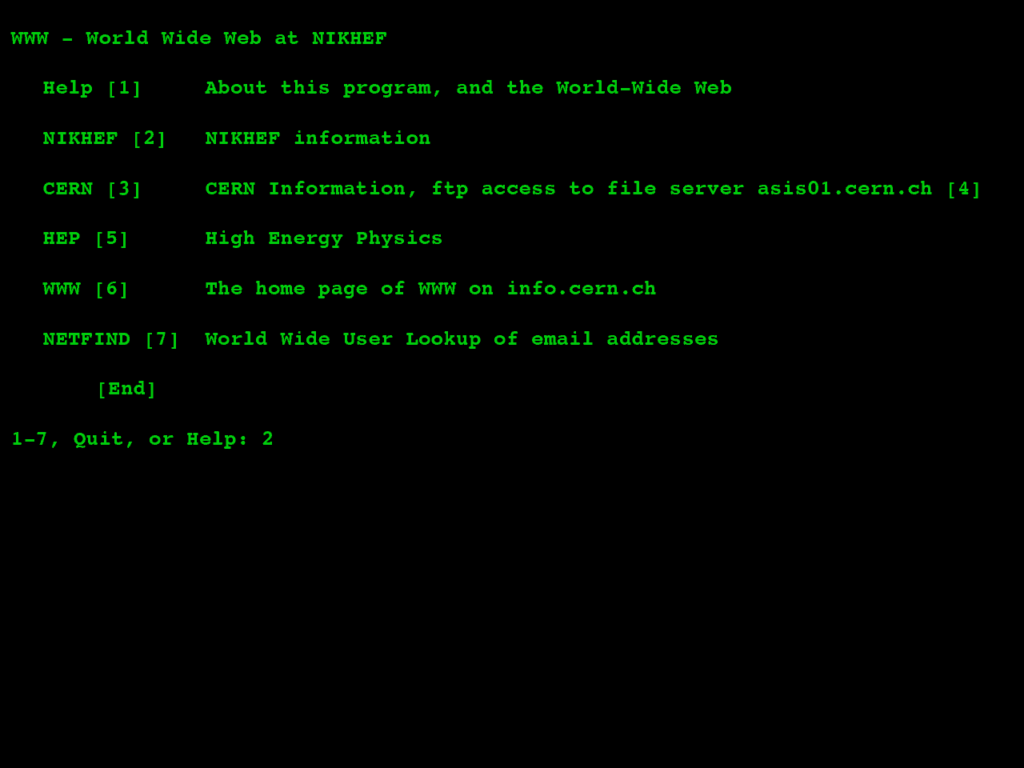In February 1992, a website went live for the first time in the Netherlands. That website was www.nikhef.nl, from the National Institute for Nuclear and High Energy Physics (Nikhef), today known as the National Institute for Subatomic Physics Nikhef.
Worldwide, only two institutes were ahead of Nikhef, namely CERN in Switzerland and SLAC in the United States. This made www.nikhef.nl not only the first website in the Netherlands, but also the third in the world. The research Nikhef did at CERN made it possible for the institute to join early in this new phenomenon developed by Tim Berners-Lee and Robert Cailliau at CERN. It was necessary to facilitate the exchange of information among the thousands of physicists scattered around the world.
The WWW was presented at CERN in 1991. Nikhef CT employee Willem van Leeuwen attended a workshop, and it was eventually Karel Gaemers, the then director of Nikhef, who encouraged Willem to install the software. Van Leeuwen did this on Nikhef’s central computer, a Sun 4/690. Gaemers eventually became one of the first users of the connection to CERN and SLAC. “He consulted the SLAC preprint database, which worked better than the program SLAC had developed for this purpose” says van Leeuwen. “Other enthusiastic users were the secretaries, who until then could only obtain phone numbers of people at CERN through researchers at Nikhef who had access to the CERN IBM.”
In 1991 and 1992, as one of the research institutes affiliated with CERN, Nikhef played an important role in promoting this new technology within CERN and the other institutes doing research at CERN. Because Nikhef had a good network connection with CERN, the Nikhef WWW server was always available for demonstrations.
In 1993, CERN declared that the software was available on a royalty-free basis.
Today, over 250,000 websites are added every day and a total of over 200 million websites are active. What made the WWW such a success? “It was because of the simplicity of the concept that was implemented by a small team that was not hampered by managers” says van Leeuwen. “The source code was public so anyone interested in the project could contribute.”
Read more about the subject:
Browse the first website in the world
Read the story by Willem van Leeuwen about his contribution to the WWW
